Artillery and Armour in the USA: Georgia, Fort James Jackson
Artillery preserved in Georgia at Fort James Jackson
One of the aims of this website is to locate, identify and document every historical piece of artillery and all armoured fighting vehicles preserved in Georgia. Many contributors have assisted in the hunt for these tangible pieces of our military history and the list you see here is constantly being revised as new finds are discovered and the data is updated. The photos have come from various contributors, but the author likes to "ground truth" the reports, so a good number of the photos are by the author unless otherwise credited. Any errors found here are by the author. It often happens that military monuments that are relatively mobile, have been moved for restoration or scrapped, sometimes they are repainted with different markings and serial numbers, or they are replaced with a different piece of kit. For those reasons, any additions, deletions, corrections or amendments that you may be able to add to this list of Artillery and AFVs in Georgia would be most welcome and may be e-mailed to the author at [email protected]. The primary aim is preserve our military history and to keep the record accurate.
Savannah, Old Fort Jackson
Fort James Jackson (usually called Old Fort Jackson or shortened to Fort Jackson) is a restored 19th-century fort located on the Savannah River, two miles east of the city of Savannah in Georgia. It is a National Historic Landmark and the oldest standing brick fort in Georgia.
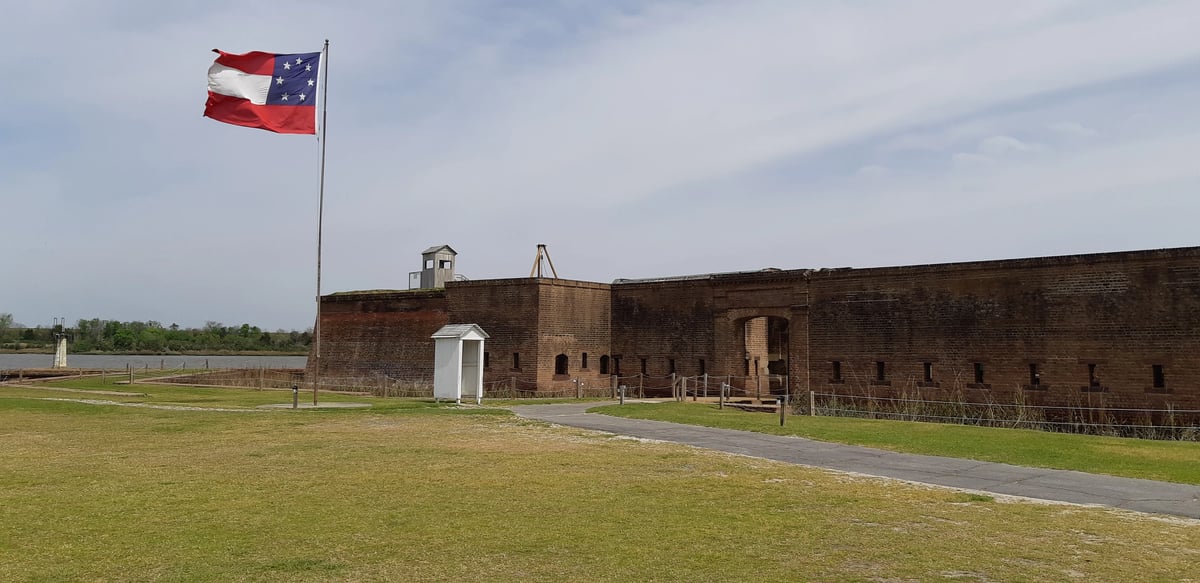
(Author Photo)
Front entrance to Old Fort Jackson, 19 March 2019.
President Thomas Jefferson authorized the construction of a national defense system of fortifications to defend his new nation. Jefferson's system included Fort Jackson, constructed between 1808 and 1812 over an old earthen battery from the American Revolution. At the time, war with Great Britain or France seemed likely, and Fort Jackson was the best site from which to protect Savannah from attack by sea. In the War of 1812, local militias and U.S. troops saw active duty at Fort Jackson. After the War of 1812, two periods of construction followed at the fort. A moat, drawbridge, brick barracks, privies, a rear wall, and another powder magazine were added.
James Jackson, the namesake of the fort, was a British native who fought for the American cause and rose to the rank of Colonel. When he was twenty-five, Jackson accepted the surrender of the British in Savannah at the close of the revolution.b He was later a US Representative, a US Senator, and Governor of Georgia.
During the American Civil War, Fort Jackson, along with nearby Fort McAllister and Fort Pulaski, defended Savannah from Union attack. In 1862, Fort Jackson was shelled from a ship captained by an escaped slave named Robert Smalls. The fort was commanded by Colonel Edward Clifford Anderson and would become the Confederate Headquarters for the Savannah River defenses, including the Confederate Navy.
When the Union Army commanded by William T. Sherman, captured Savannah by land on 20 December 1864, Confederate troops abandoned the fort and retreated across the Savannah River into South Carolina. Confederate troops from Savannah joined other forces in North Carolina and South Carolina and continued to fight until 26 April 1865, when they surrendered to General Sherman's army at Durham, North Carolina. Several different regiments garrisoned Fort Jackson during the Union occupation of Savannah. One of these units was the 55th Massachusettes Regiment, which consisted of African American troops.
From 1884 to 1905, Fort Jackson was known as Fort Oglethorpe and was little used by the U.S. military. It was purchased by the city of Savannah in 1924 for park purposes but not fully restored until the 1970s. Fort Jackson is located at 1 Fort Jackson Road, on the Islands Expressway linking Savannah to Fort Pulaski and the town of Tybee Island. (Wikipedia)
.avif)
.avif)
.avif)
.avif)
.avif)
.avif)
.avif)
(Author Photos)
Old Fort Jackson.
.avif)
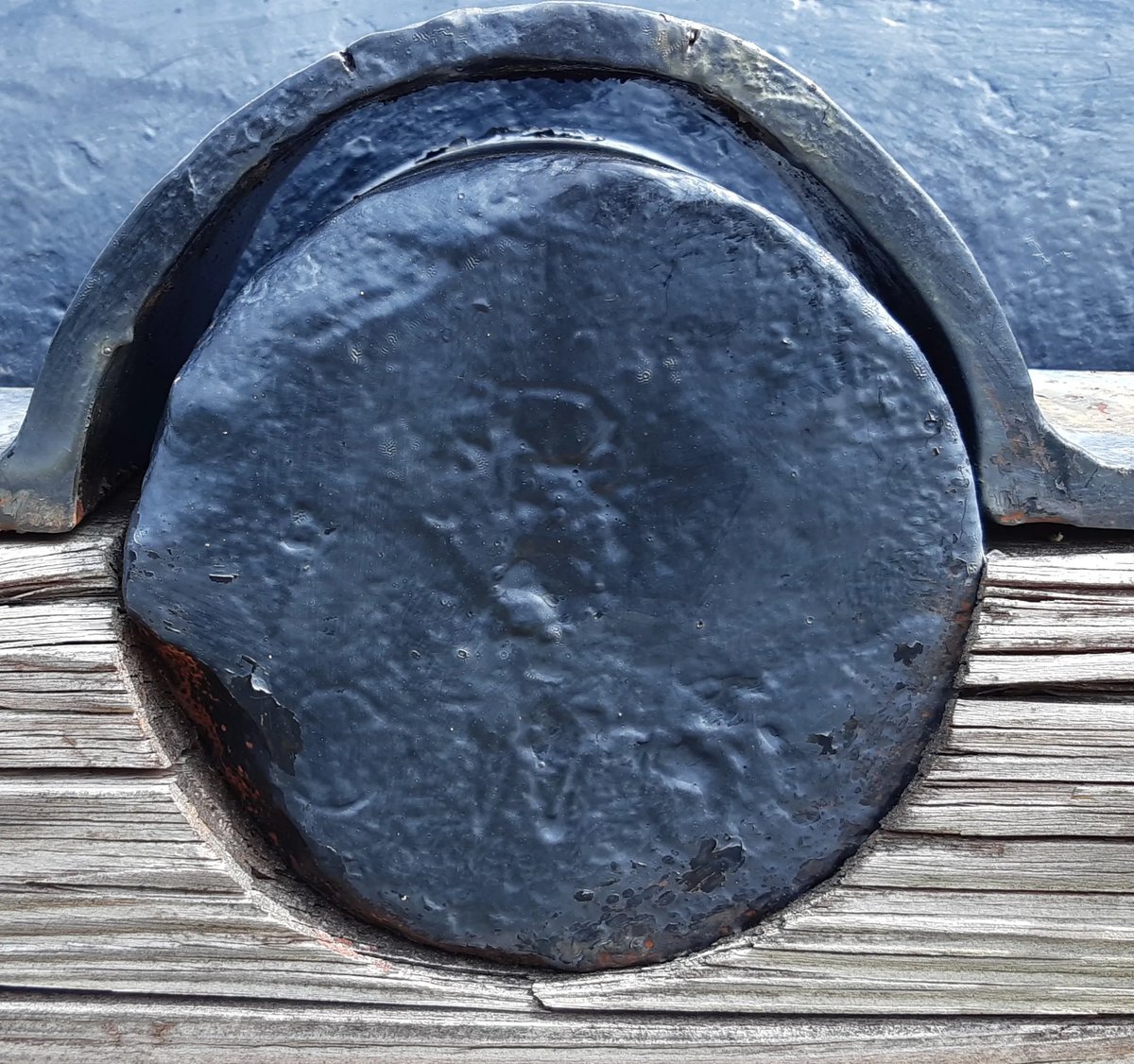
.avif)
(Author Photos)
Cast iron rifled 32-pounder Gun, M1846, modified in 1862. Originally cast as a smoothbore in Virginia in 1852, this gun was converted into a rifled gun in 186. It was mounted on the CSS Georgia ironclad which was anchored in front of Fort Jackson during the American Civil War. It had a maximum range of 3,700 yards (3,383 metres).
.avif)
.avif)
.avif)
.avif)
(Author Photos)
Cast iron SBML 24-pounder Howitzer, originally mounted on the CSS Georgia ironclad which was anchored in front of Fort Jackson during the American Civil War. It was cast by the A.N. Miller Company in Savannah, Georgia. This howitzer had a maximum range of 1,322 yards (1,208 metres). This is the only known 24-pounder howitzer cast in the South.
.avif)
(Author Photo)
Cast iron 10-inch SBML Columbiad Gun fragment, right rear section, originally mounted at Fort Bartow, near Fort James Jackson. This gun was cast in 1861 at the Tregar Iron Works in Virginia. It had a maximum range of 5 miles (8 km). The gun exploded in 1862 in the presence of General Robert E. Lee.
.avif)
.avif)
.avif)
(Author Photos)
Cast iron SBML cannon with Blomefield pattern breeching ring mounted on a wood naval gun carriages, small calibre artillery and anchors in Old Fort Jackson, to the rear of the larger guns near the main parking lot.
.avif)
.avif)

(Author Photos)
Cast iron SBML cannon with round cascable, mounted on a wood naval gun carriages, small calibre artillery and anchors in Old Fort Jackson, to the rear of the larger guns near the main parking lot.
.avif)
.avif)
.avif)
(Author Photos)
Cast-iron 24-pounder 50-cwt smoothbore muzzle-loading Gun, (ca. 1775 - 1815), weight ca 5,516 lbs, modified to fire a 30-lb projectile. During the War of 1812, eight of these 24-pounders were used to defend Savannah, although they were never fired in battle. During the American Civil War fought from 1861 to 1865, six 30-pounders covered the southern defences of Savannah to protect the city from infantry assaults. The guns fired canister or grape shot, but with light charges keep the barrels from bursting due to their age.
.avif)
(Author Photos)
Cast iron 18-pounder Smoothbore muzzle loading (SBML) gun on the ground outside Fort Jackson. Cast iron SBML 18-pounder Gun used by British, French and American forces during the American Revolution in the 1779 Battle of Savannah. After the battle, a French Officer reported "two (British SBML) 18-pounders, upon field carriages, charged with canister and placed at the head of the road (Augusta) caused terrible slaughter". During the War of 1812, six of these 18-pounders were used to defend Savannah. During the American Civil War (1861 to 1865), 18-pounders remained in service for the interior defences of Savannah. Fort Jackson was armed with larger and more powerful guns at that time. 18-pounders were sited at Fort Brown, part of the Southern defences on present day Wheaton Street in Savannah in 1862.
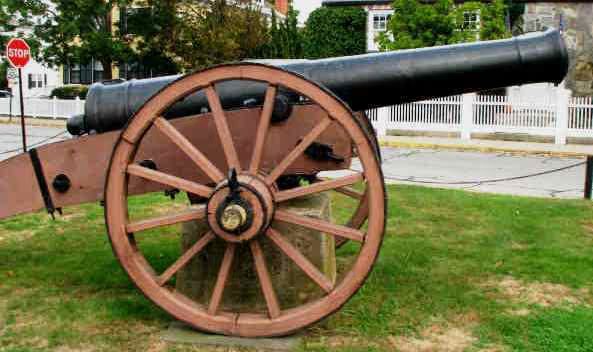
(Friends of Fort Washington Photo)
Cast iron 18-pounder SBML Gun mounted on a wheeled Field Carriage, preserved in Salisbury, Connecticut.
.avif)
.avif)

Cast iron SBML saluting gun, mounted on a wood naval carriage, on the waterfront forward of Fort Jackson.
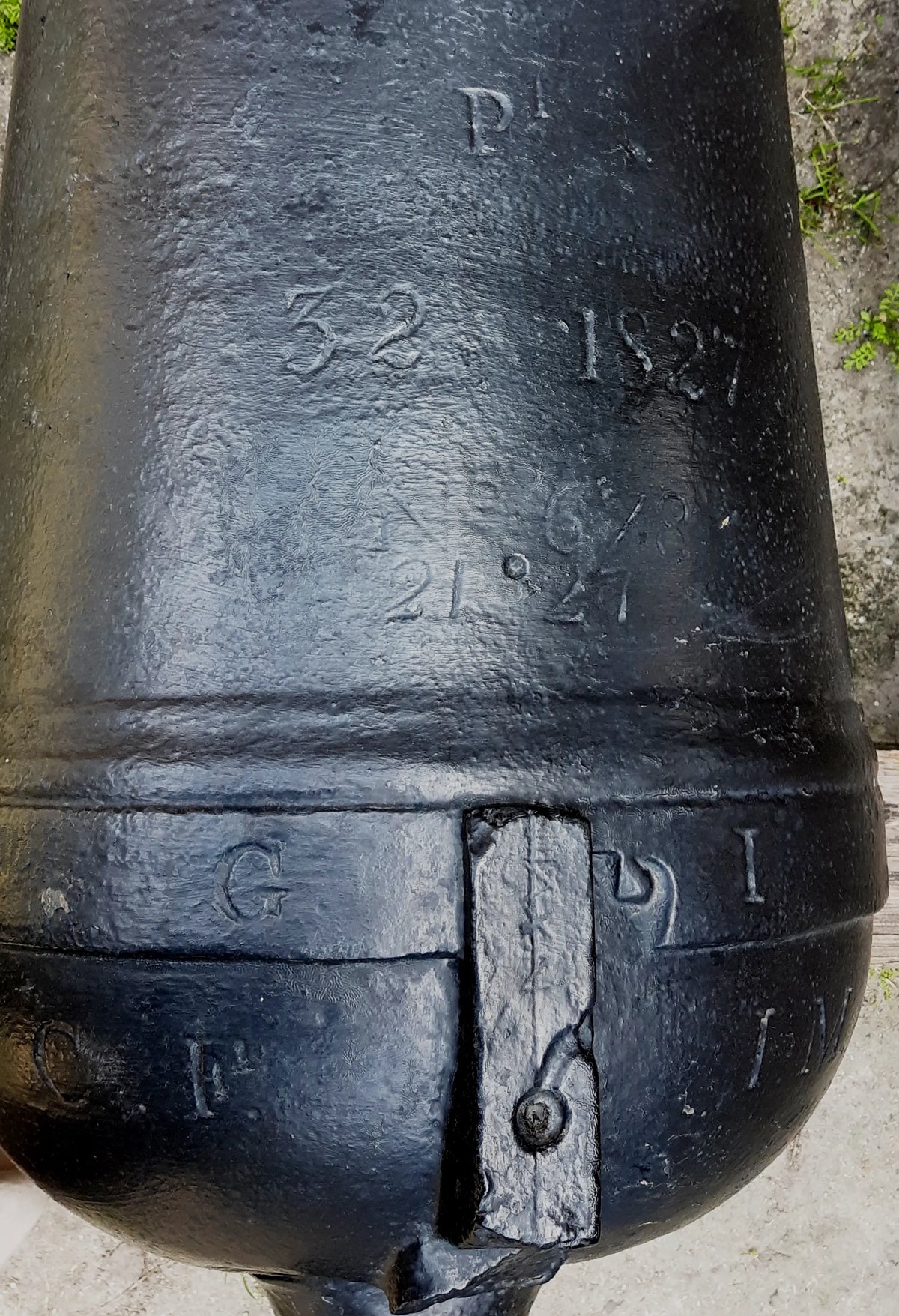
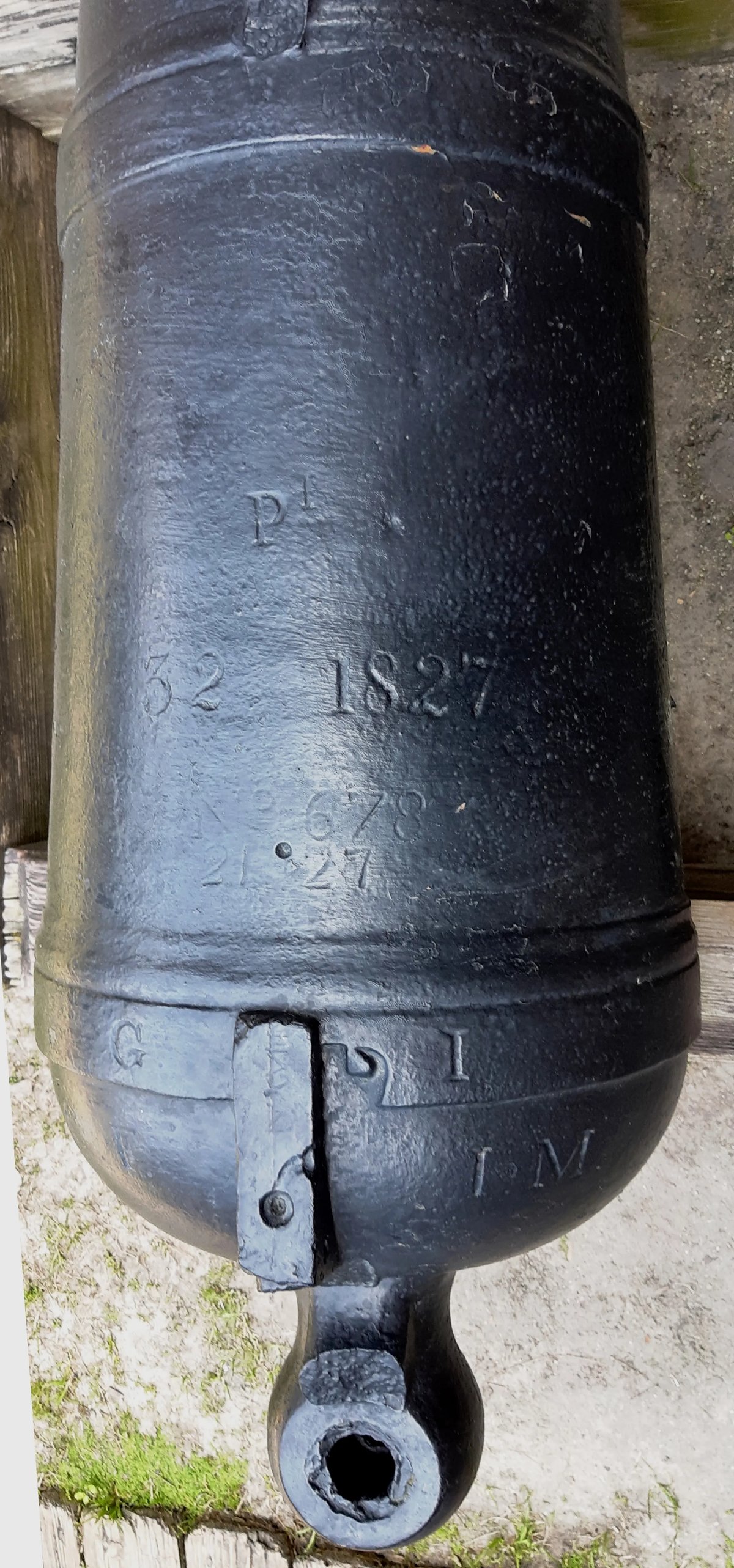
.avif)
(Author Photos)
Cast iron SBML 32-pounder Carronade with broken Blomefield pattern breeching ring, on the ground inside Fort Jackson. Pr, 32, 1827, No. 6, 21-27, GI, I, C.F.I.M on the barrel.
.avif)
.avif)
.avif)
(Author Photos)
Replica Bronze 12-pounder SBML Howitzer mounted on a wheeled field carriage, on the grounds inside Fort Jackson.
.avif)
.avif)

(Author Photos)
Cast iron SBML Gun with Millar pattern breeching ring, heavily corroded, unmounted on the ground inside Fort Jackson.
.avif)


Left trunnion, No. 32.
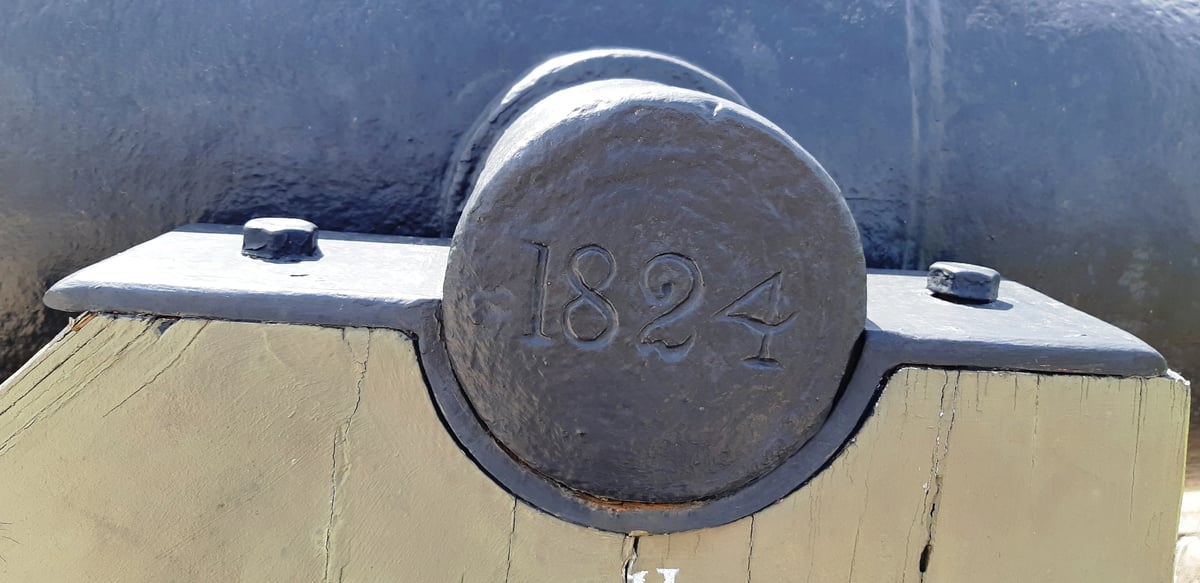
Right trunnion, 1824.

(Author Photos)
Cast iron SBML 24-pounder Siege Gun with a Blomefield pattern breeching ring, mounted on a wood traversing Barbette Carriage on the ramparts of Fort Jackson. Weight 5,750 lbs, bore size 5.82-inches, tube length 124-inches, firing a 24-lb shot to range of 1,900 yards (1,737 metres). In January, 1860 there were 61 forts and batteries that defended America’s coastal cities, not including the numerous forts that guarded the U.S Capital and the approaches along the rivers. Many of these guns were mounted on Barbette Carriages similar to this one, that were designed to be higher than the walls of fortifications.

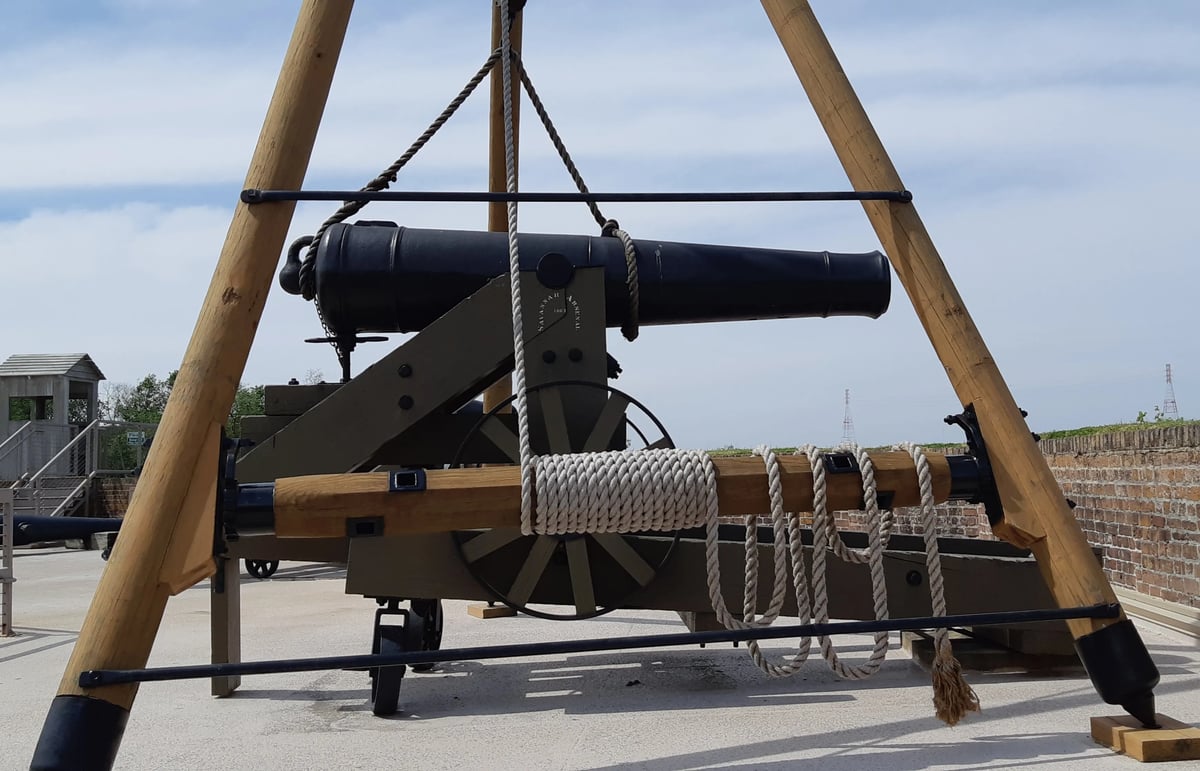


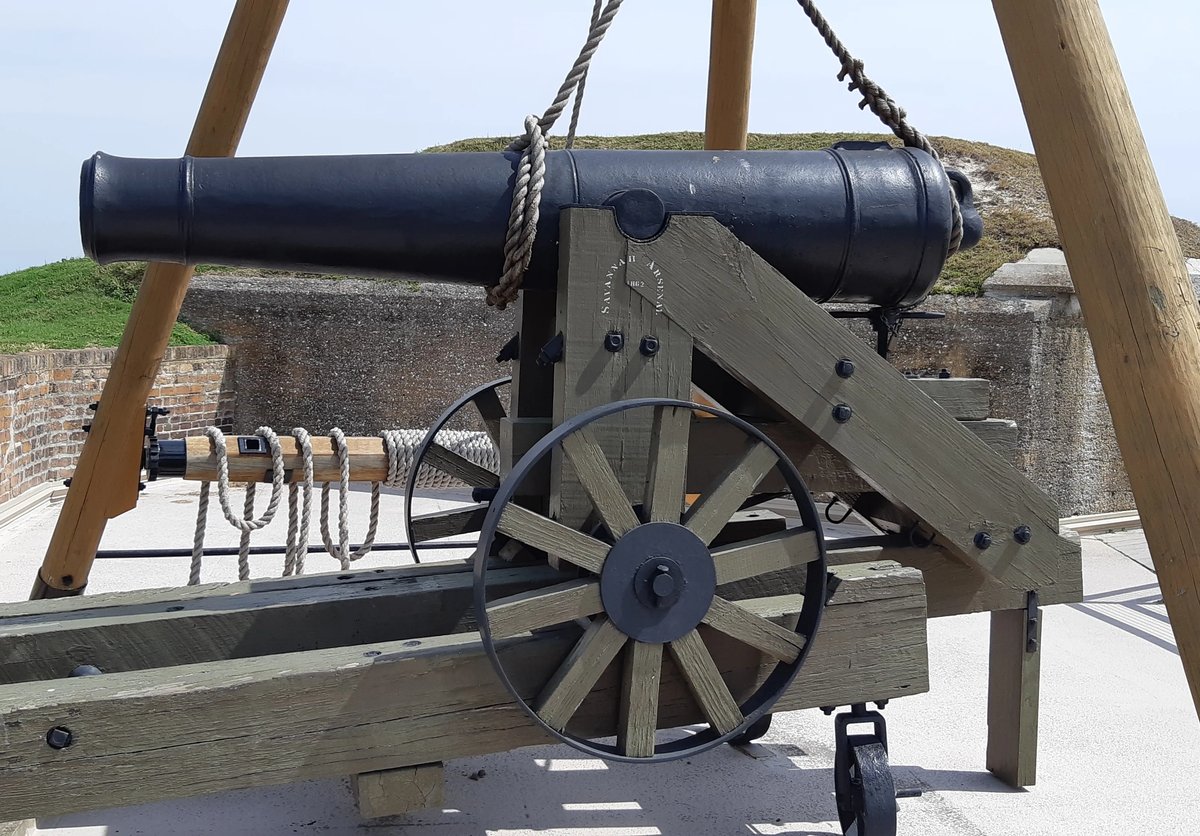
(Author Photos)
Replica SBML 24-pounder Siege Gun with a Blomefield pattern breeching ring, mounted on a wood traversing Barbette Carriage, under a Gun Gin on the ramparts of Fort Jackson.
.avif)
.webp)
.webp)

Left trunnion corroded.

Right trunnion, corroded.

IX-inch Dahlgren 32-pounder smoothbore muzzle-loading Shell Gun with Millar pattern breeching ring, mounted on a wood traversing Barbette Carriage.





